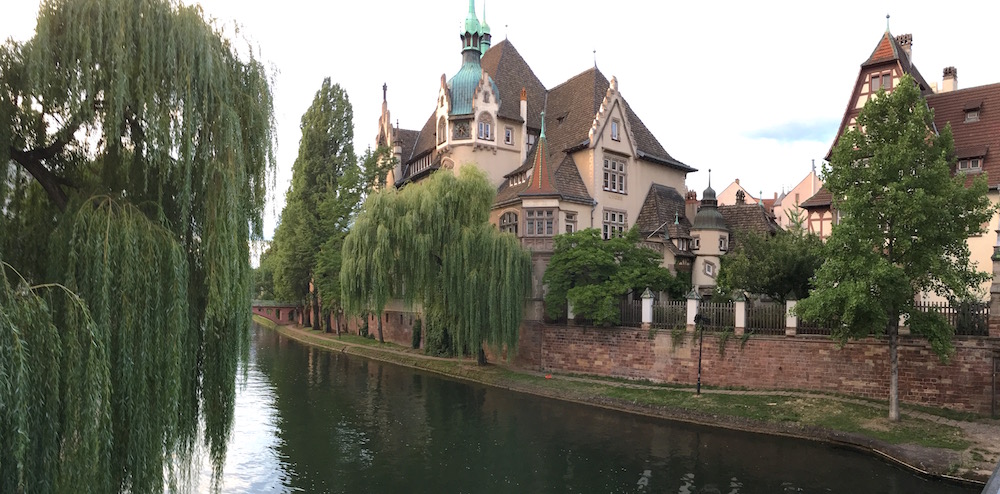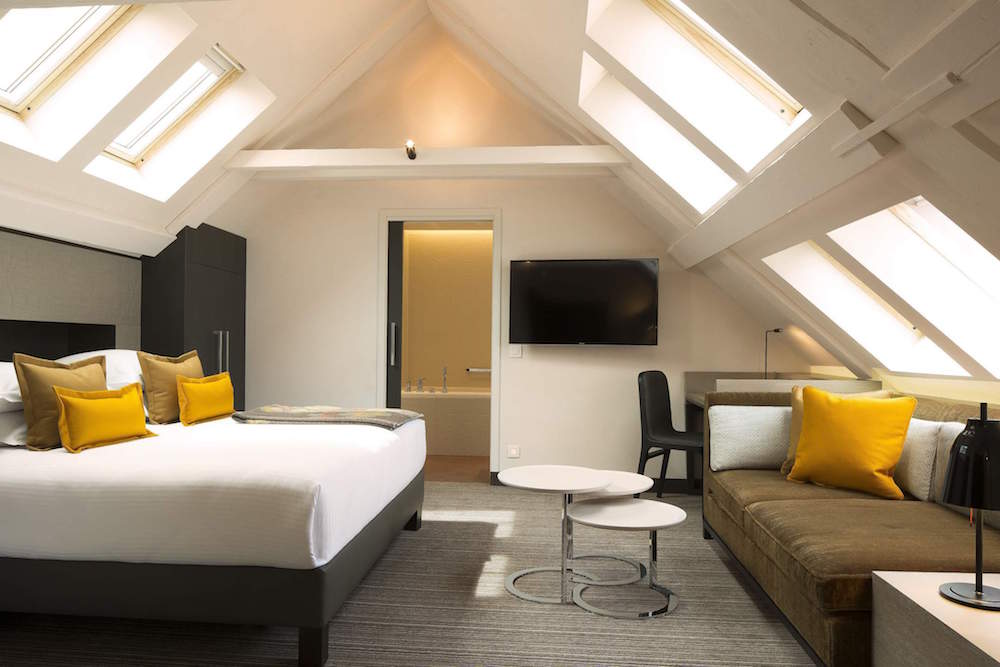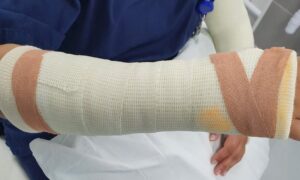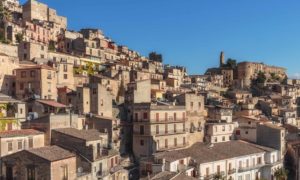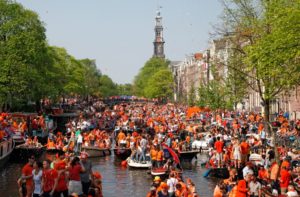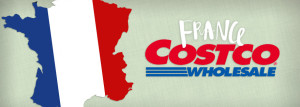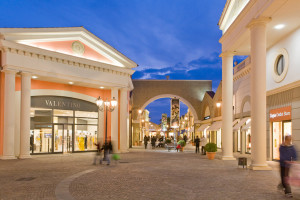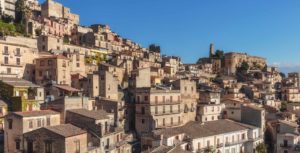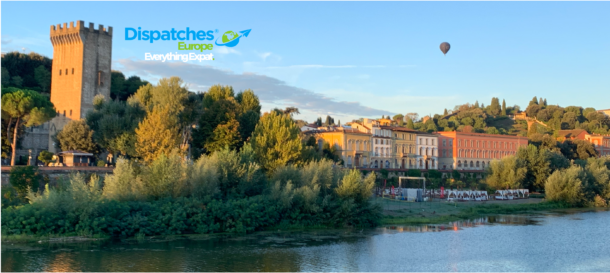I can’t believe I get paid to do this ….
Well, I don’t actually get paid. We’re a startup, so only our contributors get paid. But someday, I will get paid to go out into the wide world and write travel posts. And when I do, I want to go back to Strasbourg.
We – my wife/co-CEO Cheryl and friend Lyn Mabry – were in Strasbourg earlier this week on a two-day wine-buying trip to Alsace. It was the first time Cheryl and I been back in 10 years and our expectations were modest. A decent hotel and restaurant on a stop on the way. We thought we’d be picnicking in the vineyards when not taking photos in the ancient villages along the Alsatian Wine Route. Which we did.
But wine route villages including Riquewihr and Bergheim turned out to be different than we’d remembered … Gatlinburg-like tourist attractions where everything French had given way to souvenirs and tchotchkes.
Strasbourg, by comparison, remains authentically French and incredibly sophisticated. And it reminded us how blissful France can be for travelers.
I think the city had faded in our memories because it’s so close to other places we love – Basel, Colmar, Freiburg and Saarbrücken.
But Strasbourg is a drop-dead gorgeous city, from the Strasbourg cathedral to Le Grande Île to Petite France. It’s in an historically quirky place, the surrounding region of Alsace having traded hands between Germany and France over the years. The Wine Route has a distinctly German feel and indeed, most of the people in the villages speak both German and French.
By comparison, Strasbourg remains defiantly French despite the streets all having a French name and a German name.
This was a quick in-and-out, and it left us wanting more. Way more. Which brings me to my big dilemma: What am I going to tell you, dear expat, that you don’t already know?
I’ve never quite understood the value of travel writing even though I’ve done so much of it. Though I once had a young Air Force lieutenant tell me he read a travel post I wrote about Lycia, Turkey back in 2001, then visited every place I’d recommended. I still treasure that memory.
Truth is, ultimately, everyone wants something different. Even if we all go to the same city, every experience is different. So, am I supposed to figure out what readers want? I don’t think so. Rather, I’m going to take the Steve Jobs approach and tell you what you need to do to have the best user experience when you have a couple of days/nights to visit.
No discos, no itineraries, no bucket lists.
Just chillin’.
• Drink a LOT of wine. Tell your doctor I said it’s okay because Alsatian wine is pretty much the opposite of all other French wines. Unlike the aggressive Rhônes and big Bordeaux made to dazzle and intimidate, Alsatian wines are cheerful and unassuming company.
The whites are crisp and refreshing and the reds can be robust, but not overly tannic. (I’m drinking a Pinot Noir vielles vignes right now that’s less fruity and more port-like than its California counterparts.)
The best wines of the region are perfume-y Pinot Blancs and deep Crémants d’Alsace. And all are superb with the regional foods.
The French are crazy about rosés for picnics, and though I’m not generally a pink-wine person, they’re right. And yeah, lunch should be the first wine experience of the day.
(Editor’s note: Seriously, if you’re driving, limit yourself to one glass of wine with food, then wait a couple of hours before getting back in the car.)
• Eat like a local. The first night, we had dinner at Brasserie La Nouvelle Poste on Rue du Parchemin (Parchment Street still has a number of pen shops, oddly.)
The menu (at right) was totally Alsatian … tarte flambe and quiche. We got a bottle of Alsatian chardonnay for 23 euros. But the best part was the people. All the locals were there because the food is great, prices affordable and the staff super.
My tarte flambe was 8.50 euros and Cheryl’s salad included two large pieces of salmon and tiny shrimp and mussels for 10.50 euros. She rates it as one of her top salads ever.
You can sit and enjoy your meal and just take it all in and start to appreciate why the expat lifestyle is so cool.
The second night, we ate at a forgettable Indian restaurant just off the Place de la Cathédrale, the main square. Should have gone local again.
Strasbourg is worth the trip for no other reason than it’s one of the culinary capitals of France along with Lyon and Bordeaux. In the city, Restaurant 1741 and Au Crocodile are hot right now.
Legendary Michelin-starred restaurants in the area include the 3-star L’Auberge de l’Ill in Illhaeusern, about 30 kilometers south of Strasbourg.
And don’t forget … you can drop into any supermarket and get fabulous breads, pâtes and wines and spend a long afternoon munching in the vineyards.
• Stroll like a French person. With no real purpose other than to savor the essence of life. Every street leads to something interesting and picturesque. Walking along the river in Petit France and seeing all the Medieval buildings is a chance to imagine what Paris used to look like until much of it burned, then Haussmann opened the boulevards so Napoleon III’s soldiers could get a better shot at revolutionaries.
• Stay at the Hotel D on Rue du Fossé des Trieze. Just don’t get our room, No. 201, which was tiny.
Get 402, which Lyn had. Compared to our room, it’s a grand suite. Our room would have fit in her bathroom.
Both had high-quality beds, furnishings, sheets and towels. Hotel D has the best bath foams and shampoos ever. And get the 16 euro breakfast, which was quite complete from the Alsatian cheeses to the wonderful yogurts. Yeah, there’s a McDonalds where you can get an Egg McMuffin for 6 euros. But come on … would Hemingway have done that? He would not have. And he would have started his breakfast with cognac.
This is one of the three European Union capitals along with Brussels and Luxembourg City, so there are a million hotels including 5-stars.
But you can book a room (not necessarily 402) here on the Hotel D website for 79 euros. Try that in Paris.
Best of all, we walked from the hotel to the cathedral in maybe 10 minutes. And it’s a lovely walk on the river.
Tips:
• Wine road villages have mostly wine-and-knick-knack stores for tourists. If you’re planning to picnic in the vineyards, you need to get your bread, cheese and chilled rosé in Strasbourg before you leave. Otherwise, you’ll have to detour to the larger cities such as Selèstat and find a supermarket.
• We got gas in Selèstat for about 1.25 euros per liter as opposed to about 1.50 euros per liter where we live in the Netherlands. Gas is as cheap or cheaper here than in the rest of Europe.
• Check out the shopping. Strasbourg has such refreshingly unique shops for apparel, high-end pens, you name it. A LOT more fun shopping here than seeing the same old stuff at the High Street stores around Europe. Just follow the Rue des Juifs (Jewish Street) into the center of the Old City and you’ll see a variety of independent shops. And there many, many shopping districts including along the Rue de Noyer, which is more middle-brow.
Co-CEO of Dispatches Europe. A former military reporter, I'm a serial expat who has lived in France, Turkey, Germany and the Netherlands.


